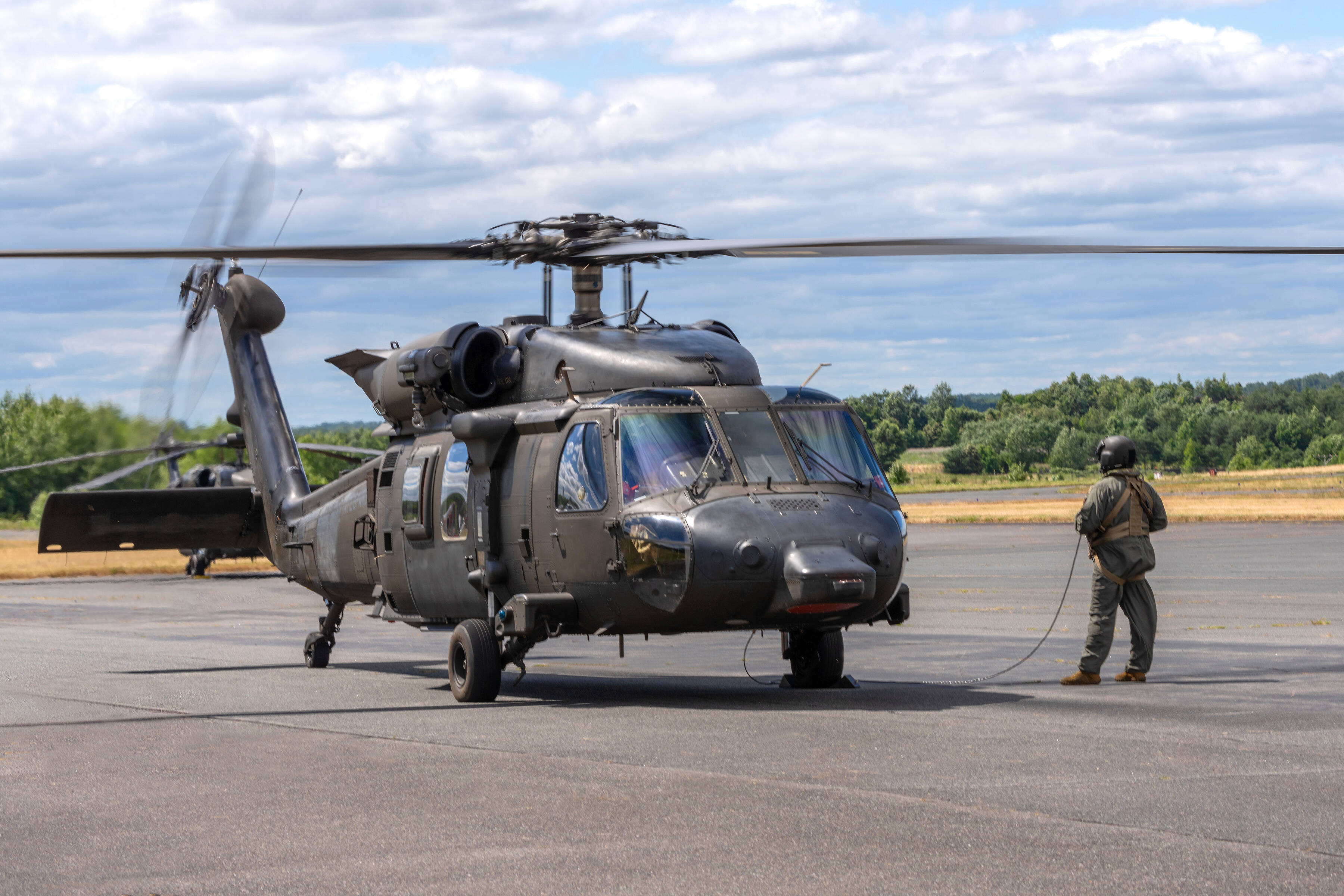DARPA Pays $6M To See Fully Autonomous Black Hawk Helicopters

The US military is betting the Black Hawk helicopter of the future won't need pilots, and it's giving the bird's maker Sikorsky $6 million to prove it.
Sikorsky parent company Lockheed Martin said yesterday that it had been awarded $6M by the Defense Advanced Research Projects Agency (DARPA) to outfit an experimental fly-by-wire Black Hawk UH-60M with the MATRIX autonomy system it developed for research group's Aircrew Labor In-cockpit Automation System (ALIAS) program.
Once the system is attached next year, the new craft will be dubbed the "MX," and will be nearly identical to an older UH-60A Sikorsky that has been used as a "flying lab" to accumulate hundreds of autonomous hours in the craft since 2022.
In other words, the military has had some sort of autonomous Black Hawk helicopter for a few years now, but this new variant signals serious interest in an autonomous rotary-wing aviation future.
Sikorsky VP and GM Rich Benton explained in a press release that autonomous Black Hawks have the potential to reduce pilots' workloads, improve flight safety and add flexibility to battlefield environments normally limited by human performance, ensuring the Army is future-ready.
"Soldiers will rely on Black Hawk helicopters into the 2070s, and modernizing the aircraft today will pay dividends for decades across Army Aviation's current and future aircraft," Benton said.
The MX aircraft and its MATRIX system will be assessed on a number of different performance criteria once the configuration is complete next year. DARPA intends to outfit it with different types of sensors to see what's best at detecting and avoiding threats, obstacles and terrain, and will also use the testing period to develop standards for outfitting fly-by-wire aircraft with MATRIX systems.
"The contract award to Sikorsky to install the MATRIX autonomy system is the second step to acquiring autonomy," spokesperson Frans Jurgens told The Register. "The first step occurred in 2020, when Sikorsky installed a fly-by-wire flight control system on the Army MX Black Hawk helicopter, so that the Army could evaluate the fly-by-wire system's flight handling qualities. Monday's announcement announces Sikorsky is now under contract to install its MATRIX autonomy system onto the same MX aircraft."
The manufacturer has previously demonstrated MATRIX's ability to operate an autonomous Black Hawk in 2022 as part of the Army's Project Convergence program. Those flights saw an autonomous Black Hawk fly 400 units of blood (around 500 lbs) 83 miles to simulate a medical resupply, and transport a 2,600-pound sling load for 30 minutes, while also responding to mid-flight changes to its orders.
The fascinating part, as Lockheed Martin VP of strategy and business development for rotary and mission systems Dan Tenney said yesterday, is that all that can happen from a tablet.
"We have the ability now with modern day sensors, algorithms and technology to enable the aircraft to work completely autonomously," Tenney said in an interview at the Association of the US Army's annual meeting.
"We're going to have a tablet, you push a button and it will go through all the pre-flight checks. It'll start, it'll take off and perform that mission," Tenney said of planned demonstration missions at this week's conference.
- Wow, so they actually let AI fly an F-16 fighter jet
- US Air Force says AI-controlled F-16 fighter jet has been dogfighting with humans
- Boeing successfully flies unmanned autonomous military 'wingman' aircraft that may become pilot's buddy
- US Army demos first robot Black Hawk helicopter
Tenney went on to explain that the system, designed to either assist a single Black Hawk pilot or take over a craft entirely, is far more complicated than just being remote controlled, or flying to programmed waypoints - he claims the system is truly autonomous.
"If you have a pilot flying and there's other mission objectives they need to be working on, they can autonomously fly the aircraft - not just on autopilot, but actually tell it to do the mission," Tenney described. "It'll adjust because of weather, it'll adjust because of geography or threats that are out there being detected through sensors and space capabilities … you can also then send it other signals and have it go perform a different mission."
As to when soldiers in the field can expect to order an autonomous resupply dropoff like something out of a video game, that might take a while - this is only going in a single aircraft for the time being. That's hardly a fleet.
"The MATRIX autonomy system would enable commanders to keep aircraft flying when the crew need to rest, or when sending in supplies in poor weather conditions, at night, and especially when flying at low altitude to avoid enemy fire," Sikorsky told us, without answering questions about a possible timeline for wider deployment.
DARPA didn't respond to questions before publication. ®
From Chip War To Cloud War: The Next Frontier In Global Tech Competition
The global chip war, characterized by intense competition among nations and corporations for supremacy in semiconductor ... Read more
The High Stakes Of Tech Regulation: Security Risks And Market Dynamics
The influence of tech giants in the global economy continues to grow, raising crucial questions about how to balance sec... Read more
The Tyranny Of Instagram Interiors: Why It's Time To Break Free From Algorithm-Driven Aesthetics
Instagram has become a dominant force in shaping interior design trends, offering a seemingly endless stream of inspirat... Read more
The Data Crunch In AI: Strategies For Sustainability
Exploring solutions to the imminent exhaustion of internet data for AI training.As the artificial intelligence (AI) indu... Read more
Google Abandons Four-Year Effort To Remove Cookies From Chrome Browser
After four years of dedicated effort, Google has decided to abandon its plan to remove third-party cookies from its Chro... Read more
LinkedIn Embraces AI And Gamification To Drive User Engagement And Revenue
In an effort to tackle slowing revenue growth and enhance user engagement, LinkedIn is turning to artificial intelligenc... Read more

